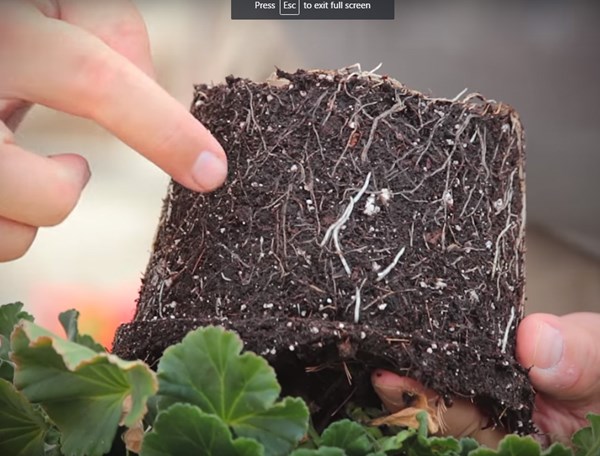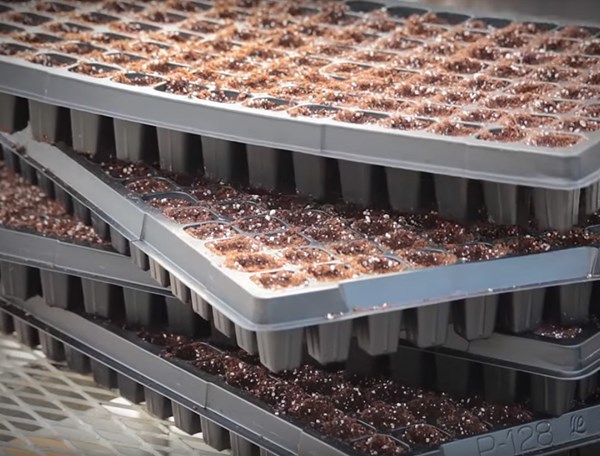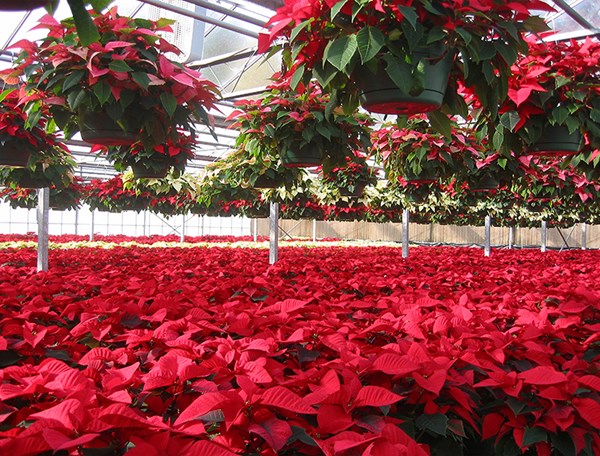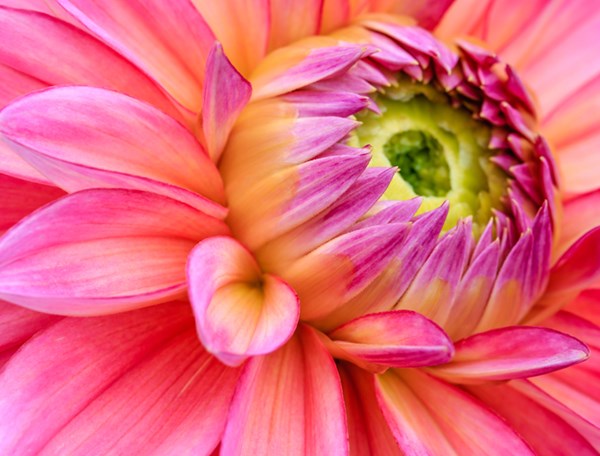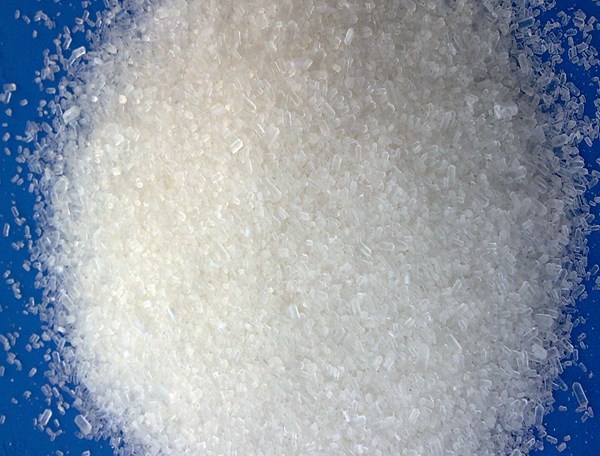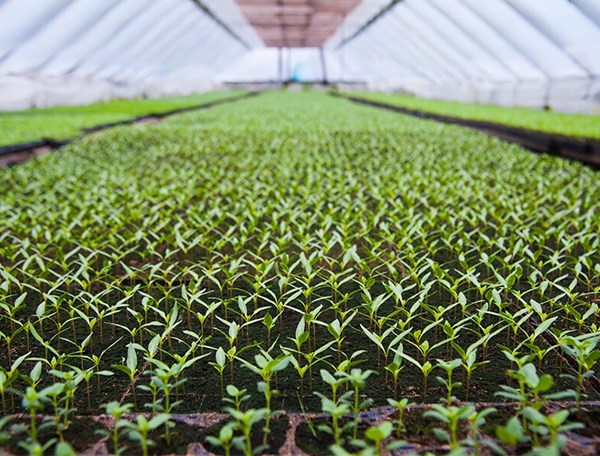Training Center
Preventing Premature Budding in Mums
Thursday, September 7, 2023 | Troy Buechel
Premature budding in mums is a common problem that many mum growers see from time to time. There can be several causes to this problem and it can involve an entire crop coming into flower early or it is scattered within a crop. In some cases, there is inconsistent, premature budding that occurs within individual plants. Having mums bloom too early or with inconsistent blooming will affect crop sales. What causes premature budding and how can it be corrected?
Concerns with Premature Budding
There are three premature budding scenarios. First, premature budding can occur within a whole mum crop in which it flowers too early and you miss your targeted sales date. Second, premature budding can occur in a small percentage of mums and is often more of a problem in some cultivars than others. This will lead to some mums being ready too soon, while others are on schedule. Third, only a portion of a plant exhibits premature budding.
The problem is that those stems or portions of the plant that bud up prematurely will stop growth earlier than the rest of the plant and begin flowering prematurely. These flowers then decline and die before the rest of the plant flowers, causing holes in the flower canopy where there are short stems with dead flowers. As expected, this detracts from the plant, reducing its quality.
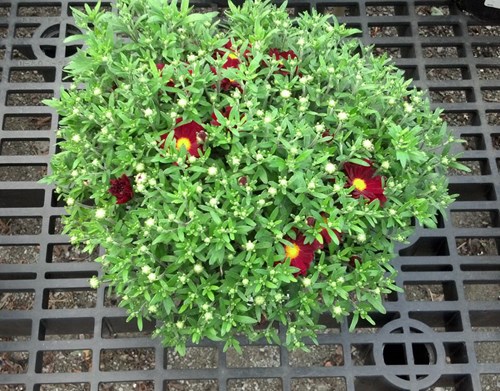
Premature budding in mum exposed to cold night temperatures. Source: https://ag.purdue.edu
As mentioned, when a mum or portion of a mum transitions from vegetative growth to premature budding, this reduces stem growth and plant size. Stems no longer develop leaves or nodes, which restricts stem length. A mum that has a portion of its stems go into premature budding is lopsided and does not have a nice round habit, while an entire crop that goes into flower too soon will not have enough growth time to produce size.
Keep in mind that water stress can also restrict plant size by reducing branching and slowing down the growth rate of the plant. This is often seen in greenhouse crops in which water is withheld and used as a natural plant growth regulator. If possible, do not let mums wilt during the active vegetative growth phase in order to maximize plant size.
Premature Budding in Cuttings
Premature budding can occur in any stage of mum crop production, including in unrooted or rooted cuttings. If cuttings come in with flower buds, there should be little delay in flowering if cuttings are pinched after they are rooted into the growing medium. Proper moisture and fertility levels need to be maintained from the day of planting to prevent flower bud initiation in the emerging side shoots.
Make sure the growing medium is wet before inserting cuttings to minimize water stress and prevent wilt. If mum cuttings arrive with nutrient deficiencies, correct these deficiencies as soon as possible to minimize stress and premature budding.
Causes of Premature Budding – Lack of Water and Fertilizer
Mums initiate buds naturally when the day length starts to shorten in the late summer / early fall. Early season mums will initiate flowering during longer days, and late season varieties initiate flowering when day length is shorter. Two of the most common causes of premature budding that are within the growers' control are stress from lack of watering or from lack of fertilization.
It is best not to allow a mum to wilt in the first 4-5 weeks after planting as this is the critical time in which premature budding can set in. Monitor fertilizer salt levels in the growing medium and do periodic tissue tests to address any nutritional deficiencies or pH problems that might occur. Nitrogen typically is used to encourage vegetative growth, so it is important that nitrogen, or all elements, does not become deficient. If controlled release fertilizers are used, remember they eventually run out of nutrients, especially during extended periods of hot weather.
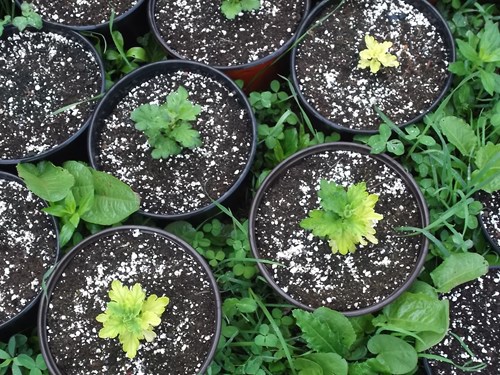
When young mums are underfertilized and exhibiting nutrient deficiencies, they are prone to premature budding. Source: Premier Tech
Causes of Premature Budding – Cold Temperatures
Temperature also has a strong influence on flower bud initiation and can override the day length if there are several cool evenings below 50°F. One solution that is partially successful is to temporarily increase water soluble fertilizer application rates to 300-400 ppm nitrogen during and shortly after these cold nights. This will help keep the plant in the vegetative stage. If you are using controlled release fertilizer, perhaps using an additional 100 ppm nitrogen may help, if fertilizer levels coming from the controlled release fertilizer are not already high.
Unfortunately, once flower initiation begins it cannot be stopped. However, those portions of a plant or other plants that did not begin flower initiation will not if night temperatures do not drop below 60°. If buds start to form on some portions of individual mums, pinch the buds off. The trade-off is that these stems may not produce buds at the same time as the rest of plant, causing holes in the flower canopy.
If the entire plant exhibits premature budding and buds are cut off, it could delay flowering by 2-3 weeks, depending on the timing in the crop cycle. Keep in mind that just as low temperatures initiate early flowers, high temperatures (above 90°F in the day and/or above 75°F at night) can delay flowering too.
Other Causes of Premature Budding
Excess fertilizer application or controlled release fertilizer that releases too much fertilizer during hot days can damage plant roots, triggering premature budding. Also, any disease that infects plants can also trigger premature flowering. Other stresses that can cause minor premature budding include rooted cuttings that become root bound, overcrowding, or improper plant spacing. Overall, minimizing plant stress is key to reducing premature budding, especially from lack of water, insufficient fertilization and cold nights.
For more information, contact your Premier Tech Grower Services Representative:
 |
 |
 |
 |
|---|---|---|---|
|
Ed Bloodnick |
Nathan Wallace-Springer |
Lance Lawson |
Victor Brantly |
 |
 |
 |
|
|
Troy Buechel |
Susan Parent |
Jose Chen Lopez |
References:
Garden Mums – Past Crop Problems and Production Tips: https://ag.umass.edu/print/9414
Online Only: Premature Budding of Garden Mums: http://www.greenhousegrower.com/production/plant-culture/online-only-premature-budding-on-garden-mums/
PRO-MIX® is a registered trademark of PREMIER HORTICULTURE Ltd.
Related Articles
-
How watering influences root disease in your crops
Premier Tech Horticulture Specialist Troy Buechel gives some advices about the relationship between watering and root disease.
-
How to avoid growing media compaction
Premier Tech Horticulture Specialist Troy Buechel talks about solutions to avoid compaction in your growing media.
-
PRO-MIX growing media for Poinsettias
Growers are getting ready for the upcoming poinsettia season and will soon be planting their crops.
-
Media and Tissue Testing - Measuring pH and E.C. of Media
In this series on horticulture testing, we will discuss how to prepare the sample for testing and then how to test the pH and electrical conductivity (E.C.).
-
MYTH Series: Epsom Salt Decreases the pH of Growing Media
Epsom salt is used by many growers as a fertilizer supplement to provide magnesium and sulfate when they are low in the fertilizer solution.
-
Growing media are one of the most widely used materials for growing greenhouse crops.

 Where to find our products
Where to find our products
